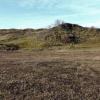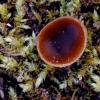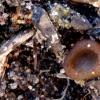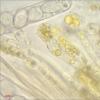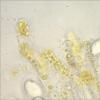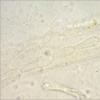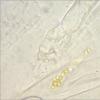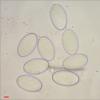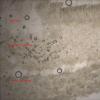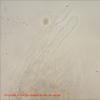
18-12-2025 21:17
Pol DebaenstThe identification took me to Byssonectria deformi

15-12-2025 07:09
 Danny Newman
Danny Newman
indet. Rutstroemiaceae sp. on unk. fallen leavesMc

19-12-2025 10:10
Patrice TANCHAUDBonjour, récolte réalisée en milieu dunaire, a

18-12-2025 17:23
 Bruno Coué
Bruno Coué
Bonjour,je serais heureux d'avoir votre avis sur c

18-12-2025 18:07
Margot en Geert VullingsThese plumes were found on rotten wood.They strong

17-12-2025 18:35
 Michel Hairaud
Michel Hairaud
Bonjour à tous/Hi to everyone I am passing along

15-12-2025 15:48
 Danny Newman
Danny Newman
Melanospora cf. lagenaria on old, rotting, fallen

15-12-2025 15:54
 Johan Boonefaes
Johan Boonefaes
Unknown anamorph found on the ground in coastal sa

15-12-2025 21:11
 Hardware Tony
Hardware Tony
Small clavate hairs, negative croziers and IKI bb
 Good afternoon everyone,
Good afternoon everyone,Yesterday 05/02 I found a large number of small Pezizas between recently mown scrub of Salix repens on the floor of a damp dune valley in the Belgian nature reserve Ter Yde, Oostduinkerke. This dune valley is extensively grazed by ponies.
I am thinking, although not immediately dung in the area, of Peziza fimeti. But I am not sure, varia is a possibility too but I never saw this species so tiny.
Anyone have any confirmation/correction?
Macroscopic:
° diameter apothecium up to 12mm
° outer wall yellow-brown - faun; hymenium darker, reddish brown
° sitting, no stem
° edge apothecium flocculent
° apothecium dextrinoid (Melzer)
Microscopic:
° Asci:
-amyloid type WTR
- no croziers (seems to me)
° paraphyses:
- moniliform
- VBs with yellow pigment
- ø tops 7.45 – 11.83µm
° Spores:
- smooth
- hyaline
- with nucleus & droplets at the poles
- 19.05-20.86 x 10.92-12.80µm
- Av(30) = 11.82 x 19.98µm
- Q 1.58-1.82
- Q(av30) = 1.68
Thx in advance,
William

Your description fits well P. fimeti, except the substrate. I don't have any experience of this species not growing on dung...
Two points:
- the moniliform paraphyses are rather common in Peziza s. str., this is not constant and often are due to the external moisture.
- the excipulum of P. fimeti shows 4 layers: a medullary excipulum divided in three parts because there exists a thin layer of hyphae inserted between the cells of the medullary excipulum, and an ectal excipulum of t. globulosa (some emerging hyphae can be seen in the outermost part).

Very interesting info about the molinifomr paraphyses.
I will try to make another coupe to examin the excipulum (there is still fresh material in the box).
About the substrate:
apparently the Pezizas grew on soil, not on wood or woody substrates, and at first glance even less so on dung. The vegetation on the finding place was mown with the cutter bar. As a result, there is a possibility that pony dung was grind and spread in this way and that these pezizas still developed on dung residues. But this is hard to prove, I think. The only certainty is that there is pony dung at the site of these Pezizas.

